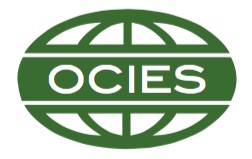Open architecture curriculum: Towards an education committed to pluralist democracy
Keywords:
curriculum theory, education policy, pluralism, open architecture, collaborative communityAbstract
This paper aims to identify elements that will help with the process of thinking through curriculum issues based on the concept of open architecture. We argue that this concept can be an interesting driver of practice and debate concerning curriculum development in different contexts. More generally, we seek for viable public education that is more deeply committed to pluralist democracy; a pluralism with some consensus, but not on everything, as argued by Chantal Mouffe, in support of Paulo Freire’s claim that no one frees anyone alone but in communion. The paper describes origin of open architecture in computing, highlighting the free software movement. Then, we briefly discuss the transposition of this concept to the educational field. We also describe some communities for practice and innovation. Teacher communities should be the main foundation of the open architecture curriculum. Teachers should be transformative intellectuals with the responsibility, among others, to listen to student voices. Finally, we describe examples of the open architecture curriculum, some real, some imaginary. The concept of open architecture can also help when conducting comparative studies to enable a better understanding of curricular differences between nations, particularly with regard to flexibilization and centralization policies.
Downloads
Published
Issue
Section
License
The International Education Journal: Comparative Perspectives is the official journal of the Oceania Comparative and International Education Society. The IEJ, (ISSN 1443-1475), publishes a general volume bi-annually in July and December and also publishes Special Editions occasionally. It is a free, open-access scholarly journal, managed by volunteers. There are no article processing charges, or any charges to authors.
In relation to intellectual property, as of 2020, the IEJ: CP claims only first publication rights; copyright of all work published in the journal remains with the authors under Creative Commons copyright license CC-BY-ND (4.0). Author(s) retain all rights to their works, ensuring that reference to the International Education Journal: Comparative Perspectives is clearly stated on any copies made or distribution. Submissions must not involve third parties with a claim to copyright, and be the sole work of the author(s). It is the responsibility of the author(s) to secure permission to reproduce photographs, illustrations, figures or tables. Single images, tables or figures can be re-used . If more than a single image or table are to be re-used authors must attribute first publication to IEJ: CP notify the IEJ: CP Editor. Authors may also make derivative works which are subject to these limitations.
See https://creativecommons.org/licenses/by-nd/4.0/ for more detail.
Re-distributed or used material must be referenced to the International Education Journal: Comparative Perspectives.
